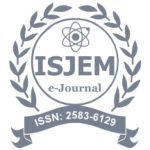A Machine Learning Approach to Assistive Obstacle Detection for the Visually Impaired
- Version
- Download 4
- File Size 376.37 KB
- File Count 1
- Create Date 5 June 2025
- Last Updated 5 June 2025
A Machine Learning Approach to Assistive Obstacle Detection for the Visually Impaired
Authors:
Ms.Prachi Kale1, Prof.Shubhangi Vitalkar2
1 Department of MCA, Trinity Academy of Engineering, Pune, India,
2Assistant Professor of MCA, Trinity Academy of Engineering, Pune, India
ABSTRACT
The ability to navigate safely through complex environments is a fundamental aspect of independence, yet this remains a significant challenge for individuals with visual impairments. Traditional mobility aids such as white canes and guide dogs offer limited functionality, often failing to detect overhead obstacles, moving hazards, or dynamic changes in the environment. This research proposes a machine learning-based obstacle detection system designed to assist blind individuals by recognizing, localizing, and describing environmental obstacles in real time using a lightweight deep learning model integrated with speech feedback mechanisms.The system employs the YOLOv5 (You Only Look Once) object detection algorithm, a state-of-the-art convolutional neural network optimized for real-time object detection, paired with OpenCV for video frame processing and distance estimation. The model is pre-trained on the COCO dataset and further fine-tuned for obstacle detection relevant to pedestrian navigation, such as bicycles, stairs, walls, and poles.
This research contributes to the growing body of work on assistive technologies for the visually impaired by integrating deep learning and computer vision in a practical, user-friendly form. Unlike previous approaches that require cloud connectivity or high-end GPUs, the proposed system operates entirely on-device, ensuring reliability even in low-connectivity environments.
KEYWORDS: Obstacle Detection, Blind Navigation, Machine Learning,Assistive Technology, Computer Vision,Object Recognition,Convolutional Neural Networks (CNN), Image Processing, Ultrasonic Sensors, Sensor Fusion, Text-to-Speech (TTS).
Download
